This article was medically reviewed by Erik Kramer, DO, MPH. Dr. Erik Kramer is a Board-Certified Primary Care Physician at the University of Colorado. With over 15 years of experience, his clinical interests include obesity and weight management, diabetes care, and preventive care, as well as embracing a holistic approach to primary care. He received his Doctorate in Osteopathic Medicine (D.O.) from the Touro University Nevada College of Osteopathic Medicine and completed his residency at Central Maine Medical Center. Dr. Kramer is a Diplomate of the American Board of Obesity Medicine.
There are 10 references cited in this article, which can be found at the bottom of the page.
wikiHow marks an article as reader-approved once it receives enough positive feedback. In this case, 100% of readers who voted found the article helpful, earning it our reader-approved status.
This article has been viewed 168,603 times.
Experts agree that a fever is a sign that your body is attempting to fight off something bad, such as a virus or an infection. Fevers are usually the symptom of a specific condition or problem, like the flu, heat exhaustion, a sunburn, some inflammatory conditions, reactions to medicines and more.[1] Either because of the fever itself, or the underlying condition that is causing the fever, you may also experience skin sensitivity. Fortunately, research suggests that this sensitivity is likely temporary and can usually be alleviated through simple home remedies.[2]
Steps
Treating Skin Sensitivity
-
1Dress comfortably in soft and light fabrics.[3] This includes the sheets and blankets you use for sleeping or resting. Try to use as few layers as possible.
-
2Turn down the heat. If it’s the winter and you have your furnace on, consider temporarily turning down the temperature to keep your home cool while you recover.[4]
- If it isn’t winter and you cannot turn down the temperature, try using a fan instead. Misting yourself occasionally with water while you're in front of the fan also feels wonderful.
Advertisement -
3Bathe or shower in tepid water. Tepid water is considered water that is at 85 °F or 30 °C. Baths are better than showers as you get to immerse yourself in the water, but showers are okay if you do not have a bathtub.[5]
- Do not bathe or shower in ice-cold water.
- Do not use (rubbing) alcohol in an attempt to cool your skin.
-
4Place cold washcloths or icepacks on your neck.[6] There are several methods you can use to get something cool enough to put on your forehead, face or the back of your neck. You can run a washcloth under cool or cold water, place an icepack or ice cubes inside a washcloth or towel (this method will last longer), or wet a washcloth and put it in the freezer before using it. Try making a rice pack and placing it in the freezer. This can be made with a cloth bag and dry rice or purchased as-is.
-
5Go to bed with wet socks. Before bed, soak your feet in hot water. Then wet a pair of cotton socks in cold water and put them on. Put a pair of thicker socks overtop of your wet socks. Go to bed.[7]
- This is not recommended for diabetics, as they do not have good circulation or sensation in their feet.
- Some skincare manufacturers make products for your feet that contain mint. When applied to your feet they make the skin feel cool. Use a lotion, cream or gel like this on your feet throughout the day to help cool you down.
Treating the Fever
-
1Take an over-the-counter medication. Doctors usually suggest taking acetaminophen, ibuprofen or aspirin if you are an adult with a fever. Follow the dosage instructions on the box to determine how much to take, and at what frequency.[8]
- You can take acetaminophen and ibuprofen at the same time, or alternate between them every 4 hours to help manage fever or malaise better.
-
2Take prescription medication. Since your fever is probably a symptom of another, underlying condition, your doctor may prescribe a drug to help that underlying condition (such as an antibiotic).[9] Only take prescription medication that has been prescribed specifically for you and your situation. And take the medication in the amount and frequency determined by your doctor, and written on the bottle.
-
3Drink a lot of fluids. Fevers can cause your body to become dehydrated, but in order to keep your body strong to fight whatever you have, you have to keep yourself hydrated. Drink as much water or juice as you can, as often as you can.[10]
- Broths are also helpful since they contain some salt, which can help alleviate dehydration. Try having chicken soup or a similar broth to help treat colds or the flu.[11]
- An alternative to simply drinking a liquid is to suck on ice chips or popsicles. Because you have a fever and are probably very hot, this might also help you feel a little cooler, at least temporarily.
-
4Get lots of rest. You have a fever because something is wrong. Your body needs to use all its energy for fighting, not doing other unnecessary things. In addition, activities that need energy also cause your temperature to increase, something you do not need right now![12] Stay in bed or on the couch. Don’t go to work or school. Don’t go out on errands unless absolutely necessary. Don’t worry about chores until you feel better.
Preventing Future Fevers
-
1Wash your hands. You can never wash your hands too much. You should especially wash your hands after you’ve used the bathroom and before you eat. It is also helpful to get into the habit of washing your hands after you’ve been out in public, or have touched public door handles, elevator buttons, or railings.[13]
-
2Do not touch your face. Your hands are your connection to the world. Unfortunately, that means they’re probably covered in dirt, oil, bacteria and other stuff you don’t want to think about, especially before you’ve washed them.[14]
-
3Do not share bottles, cups, or cutlery. This is especially important if either you or the other person are currently feeling ill. But just to be safe, because many illnesses can be contagious when the person isn’t symptomatic, it’s best just to avoid sharing anything, with anyone, that touches your mouth.[15]
-
4Get your regular immunizations. Make sure your vaccinations and immunizations are up-to-date. If you can’t remember when you last had one, speak to your doctor — in some cases, it’s better to get a shot early than not at all. [16] These immunizations will help keep away many illnesses like the flu or the measles that have a fever as a symptom.
- Note that it is not uncommon for an immunization with an active virus to give you temporary symptoms, including a fever, in the few days following the shot. Make sure you’re aware of these possible side effects by speaking to your doctor.
Warnings
- “Normal” body temperature is 98.6 °F or 37 °C. For infants contact your doctor regarding the fever if (a) your one- to three-month-old has a temperature higher than 100.4 °F or 38C, (b) your three- to six-month-old has a temperature above 102 °F or 38.9 °C, (c) your six- to 24-month-old has a temperature higher than 102 °F or 38.9 °C for more than one day, For children older than two years, contact a doctor if they have a fever plus other symptoms. For adults contact your doctor if your fever is above 103 °F or 39.4 °C and it’s lasted more than three days.[17]⧼thumbs_response⧽
- Regardless of the fever’s temperature, if you are concerned, go see your doctor.⧼thumbs_response⧽
References
- ↑ http://www.mayoclinic.org/diseases-conditions/fever/basics/causes/con-20019229
- ↑ https://www.mayoclinic.org/diseases-conditions/fever/diagnosis-treatment/drc-20352764
- ↑ http://www.mayoclinic.org/diseases-conditions/fever/basics/lifestyle-home-remedies/con-20019229
- ↑ http://www.mayoclinic.org/diseases-conditions/fever/basics/lifestyle-home-remedies/con-20019229
- ↑ http://www.medicinenet.com/aches_pain_fever/page5.htm
- ↑ http://www.besthealthmag.ca/best-you/home-remedies/natural-home-remedies-fever#a6pM5rq8JhcOVklv.97
- ↑ http://www.besthealthmag.ca/best-you/home-remedies/natural-home-remedies-fever#a6pM5rq8JhcOVklv.97
- ↑ http://www.mayoclinic.org/diseases-conditions/fever/basics/treatment/con-20019229
- ↑ http://www.mayoclinic.org/diseases-conditions/fever/basics/treatment/con-20019229
- ↑ http://www.mayoclinic.org/diseases-conditions/fever/basics/lifestyle-home-remedies/con-20019229
- ↑ https://www.sciencedaily.com/releases/2000/10/001018075252.htm
- ↑ http://www.mayoclinic.org/diseases-conditions/fever/basics/lifestyle-home-remedies/con-20019229
- ↑ http://www.mayoclinic.org/diseases-conditions/fever/basics/prevention/con-20019229
- ↑ http://www.mayoclinic.org/diseases-conditions/fever/basics/prevention/con-20019229
- ↑ http://www.mayoclinic.org/diseases-conditions/fever/basics/prevention/con-20019229
- ↑ http://www.medicinenet.com/aches_pain_fever/page7.htm
- ↑ http://www.mayoclinic.org/diseases-conditions/fever/basics/symptoms/con-20019229
About This Article
To treat skin sensitivity associated with fever, try to wear soft, light fabrics since they'll feel less harsh on your skin. You can also place a cold washcloth or ice pack on your neck and forehead to cool off and soothe your skin. Alternatively, take a tepid shower or bath to lower your body temperature. Or, you can go to bed wearing cold, wet socks with a thicker pair of socks over them so you're not as hot. For more advice from our Medical co-author, like how to treat your fever, scroll down.

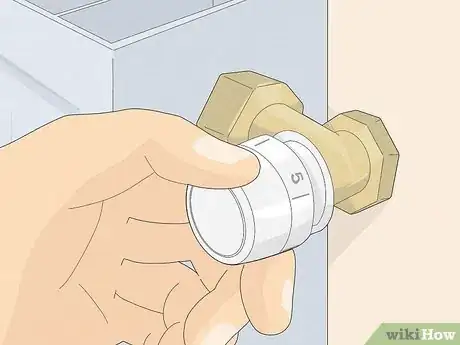


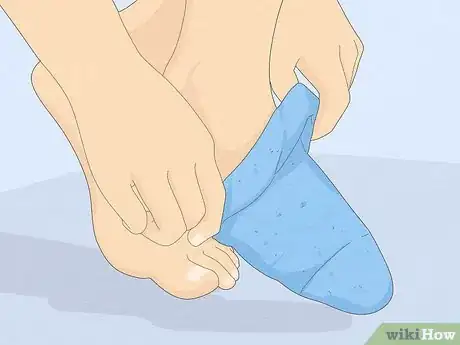
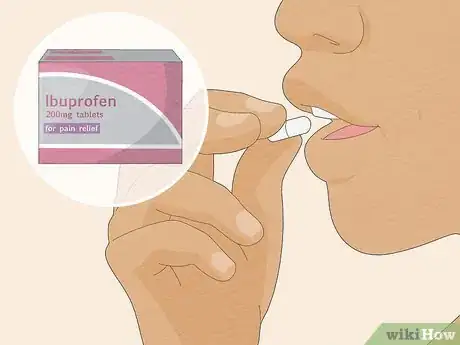
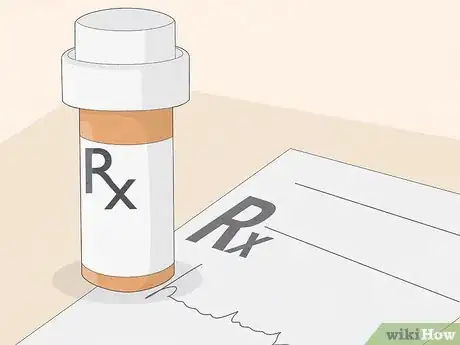


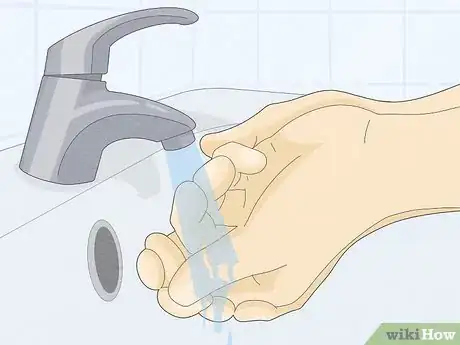
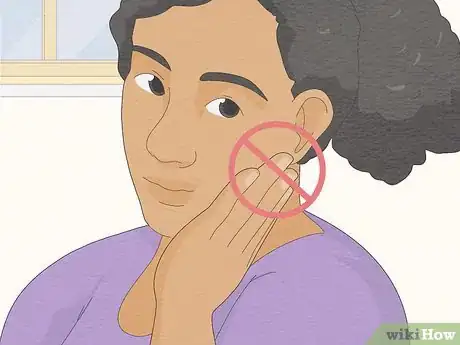
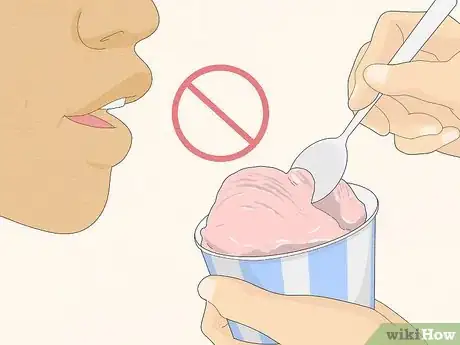
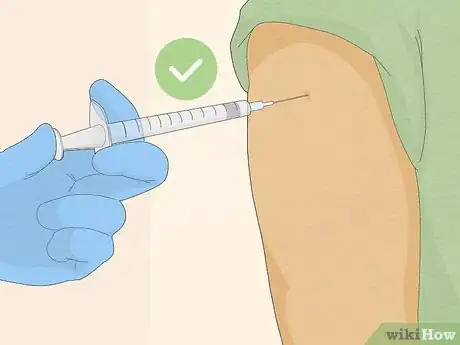


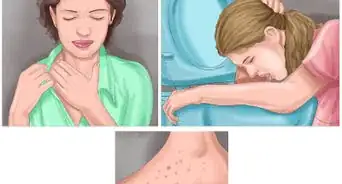

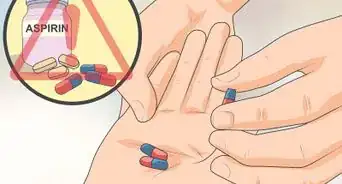



























































Medical Disclaimer
The content of this article is not intended to be a substitute for professional medical advice, examination, diagnosis, or treatment. You should always contact your doctor or other qualified healthcare professional before starting, changing, or stopping any kind of health treatment.
Read More...